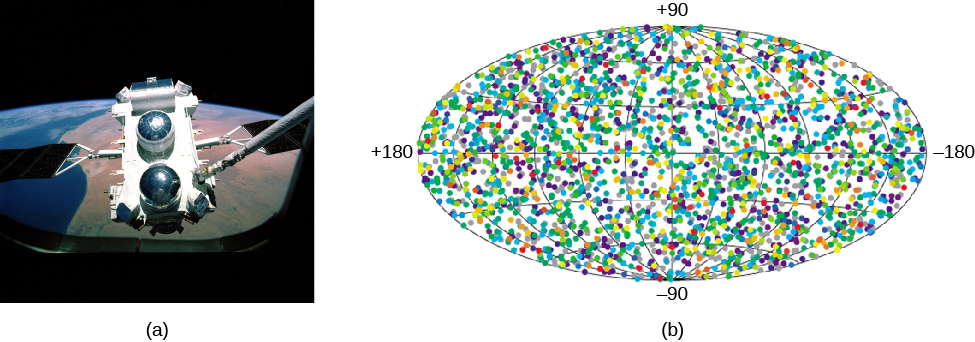| << Chapter < Page | Chapter >> Page > |
By the end of this section, you will be able to:
Everybody loves a good mystery, and astronomers are no exception. The mystery we will discuss in this section was first discovered in the mid-1960s, not via astronomical research, but as a result of a search for the tell-tale signs of nuclear weapon explosions. The US Defense Department launched a series of Vela satellites to make sure that no country was violating a treaty that banned the detonation of nuclear weapons in space.
Since nuclear explosions produce the most energetic form of electromagnetic waves called gamma rays (see Radiation and Spectra ), the Vela satellites contained detectors to search for this type of radiation. The satellites did not detect any confirmed events from human activities, but they did—to everyone’s surprise—detect short bursts of gamma rays coming from random directions in the sky. News of the discovery was first published in 1973; however, the origin of the bursts remained a mystery. No one knew what produced the brief flashes of gamma rays or how far away the sources were.
With the launch of the Compton Gamma-Ray Observatory by NASA in 1991, astronomers began to identify many more bursts and to learn more about them ( [link] ). Approximately once per day, the NASA satellite detected a flash of gamma rays somewhere in the sky that lasted from a fraction of a second to several hundred seconds. Before the Compton measurements, astronomers had expected that the most likely place for the bursts to come from was the main disk of our own (pancake-shaped) Galaxy. If this had been the case, however, more bursts would have been seen in the crowded plane of the Milky Way than above or below it. Instead, the sources of the bursts were distributed isotropically ; that is, they could appear anywhere in the sky with no preference for one region over another. Almost never did a second burst come from the same location.


Notification Switch
Would you like to follow the 'Astronomy' conversation and receive update notifications?